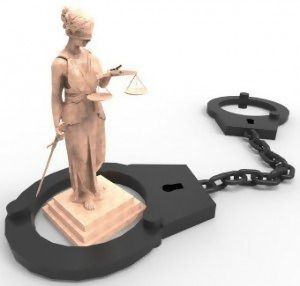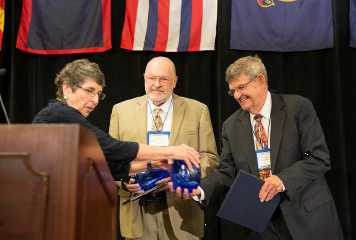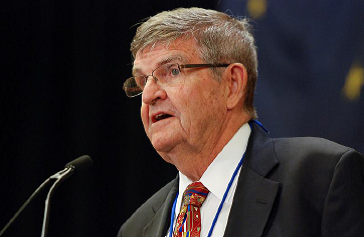Media
Welcome to our media center. Browse news, videos, and articles.
News

Criminally Yours: Lying To Get To The Truth, By Toni Messina
Above the Law writer takes a stand against police lying in interrogations. Criminally Yours: Lying To Get To The Truth By Toni Messina A hot topic in criminal law is “false confessions.” Why would someone ever admit to a crime he didn’t commit? How could anyone be so naïve or

Video and acceptance speech of Larry Hammond at the 2015 Ninth Circuit Judicial Conference – receiving the American Inns of Court Professionalism Award for the Ninth Circuit (July, 2015)
Larry Hammond’s acceptance remarks on receiving the Ninth Circuit’s Professionalism Award in San Diego, acknowledging the generations of Arizona lawyers, law students, law school Deans, and volunteers who have contributed to the work of the Arizona Justice Project. Click here for Video Link !
When someone commits a murder, we all share a bit of the blame ~ Natman Schaye
Natman Schaye is senior trial counsel for the nonprofit Arizona Capital Representation Project and a longtime friend of the work of the Arizona Justice Project. When someone commits a murder, we all share a bit of the blame Story: http://wpo.st/DUqb0

You are invited to Arizona Justice Project’s Celebration of Wrongful Conviction Day 2015!
October 1, 2015, 3:30 p.m. to 5:00 p.m. Reception To Follow (Light snacks and refreshments) @ ASU Sandra Day O’Connor College of Law Great Hall, 1100 S. McAllister Ave. Tempe, AZ 85281 (The Great Hall is located in Armstrong Hall, which is located at the southwest corner of Terrace and McAllister)

Larry Hammond received the American Inns of Court Professionalism Award for the Ninth Circuit this past July in San Diego, pictured below!
Larry Hammond, a Partner at Osborn Maledon in Phoenix, received the 2015 American Inns of Court Professionalism Award for the Ninth Circuit. The award in part recognizes his work to establish the Arizona Justice Project, which he has chaired since its inception. The project has helped secure the release from

ASU Post-conviction Clinic – helping inmates who are innocent but have been convicted of a crime
ASU Post-conviction Clinic Host: Ted Simons Arizona State University’s Post-conviction Clinic seeks to help inmates who are innocent but have been convicted of a crime. The clinic recently received a new grant from the National Institute of Justice. Click here to see video. Guests: Katherine Puzauskas – executive director of the
Articles

Criminally Yours: Lying To Get To The Truth, By Toni Messina
Above the Law writer takes a stand against police lying in interrogations. Criminally Yours: Lying To Get To The Truth By Toni Messina A hot topic in criminal law is “false confessions.” Why would someone ever admit to a crime he didn’t commit? How could anyone be so naïve or

Video and acceptance speech of Larry Hammond at the 2015 Ninth Circuit Judicial Conference – receiving the American Inns of Court Professionalism Award for the Ninth Circuit (July, 2015)
Larry Hammond’s acceptance remarks on receiving the Ninth Circuit’s Professionalism Award in San Diego, acknowledging the generations of Arizona lawyers, law students, law school Deans, and volunteers who have contributed to the work of the Arizona Justice Project. Click here for Video Link !
When someone commits a murder, we all share a bit of the blame ~ Natman Schaye
Natman Schaye is senior trial counsel for the nonprofit Arizona Capital Representation Project and a longtime friend of the work of the Arizona Justice Project. When someone commits a murder, we all share a bit of the blame Story: http://wpo.st/DUqb0

You are invited to Arizona Justice Project’s Celebration of Wrongful Conviction Day 2015!
October 1, 2015, 3:30 p.m. to 5:00 p.m. Reception To Follow (Light snacks and refreshments) @ ASU Sandra Day O’Connor College of Law Great Hall, 1100 S. McAllister Ave. Tempe, AZ 85281 (The Great Hall is located in Armstrong Hall, which is located at the southwest corner of Terrace and McAllister)

Larry Hammond received the American Inns of Court Professionalism Award for the Ninth Circuit this past July in San Diego, pictured below!
Larry Hammond, a Partner at Osborn Maledon in Phoenix, received the 2015 American Inns of Court Professionalism Award for the Ninth Circuit. The award in part recognizes his work to establish the Arizona Justice Project, which he has chaired since its inception. The project has helped secure the release from

ASU Post-conviction Clinic – helping inmates who are innocent but have been convicted of a crime
ASU Post-conviction Clinic Host: Ted Simons Arizona State University’s Post-conviction Clinic seeks to help inmates who are innocent but have been convicted of a crime. The clinic recently received a new grant from the National Institute of Justice. Click here to see video. Guests: Katherine Puzauskas – executive director of the